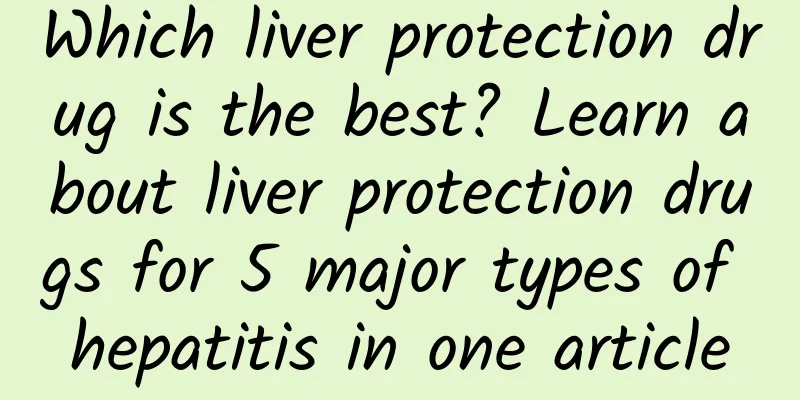Peking Union Medical College doctor says | How to deal with acute sports injuries?

|
With the holding of the 2022 Beijing Winter Olympics and the proposal of the goal of "300 million people on ice and snow", ice and snow sports have received unprecedented attention from the people, and everyone has participated widely and actively. However, ice and snow sports are a high-risk sport, and the sensitivity of human activities decreases in winter, making sports injuries more likely to occur. If acute injuries can be handled promptly and scientifically when they occur, it can prevent acute injuries from turning into chronic injuries, reduce the degree of inflammation, and shorten recovery time. So, how should acute sports injuries be handled? Are your common practices usually correct? Don't worry, experts from the Department of Rehabilitation Medicine of Peking Union Medical College Hospital are here to teach you - About the author: Yang Yuying Rehabilitation therapist at the Department of Rehabilitation Medicine, Peking Union Medical College Hospital. Expertise: sports injury rehabilitation (runner's knee, ankle sprain, etc.), chronic musculoskeletal pain rehabilitation (chronic low back pain, rotator cuff injury, frozen shoulder, etc.), rheumatic immune system disease rehabilitation (ankylosing spondylitis). Audit expert: Chen Lixia Director of the Department of Rehabilitation Medicine, Peking Union Medical College Hospital, Chief Physician. He is also a standing member and secretary general of the 12th Committee of the Physical Medicine and Rehabilitation Branch of the Chinese Medical Association, vice chairman of the 12th Committee of the Physical Medicine and Rehabilitation Branch of the Beijing Medical Association, vice chairman of the Hemophilia Group of the China Rare Disease Alliance, and editorial board member of the Chinese Journal of Physical Medicine and Rehabilitation. Expertise: functional assessment and rehabilitation of hemophilia, sequelae of stroke, Parkinson's disease, dysphagia, osteoporosis, low back pain, cervical spondylosis, and postoperative bone and joint system. For most patients, when dealing with acute closed soft tissue injuries (such as anterior cruciate ligament injury of the knee, ankle sprain, muscle contusion, strain, etc.), just learn the POLICE principle (protection, ice, pressure bandage, elevation, optimal load)! Protection (P) Misunderstanding/behavior : Thinking the injury is not serious, not taking any action and continuing to exercise **Correct treatment: **Immediately leave the sports venue, move to a safe place to check the injury, and rest nearby to protect the affected limb to avoid further injury **Effects: **Untreated minor injuries often lead to more serious injuries if you continue to exercise. This is because after a ligament or muscle injury, the body's inflammatory response will lead to an increase in exudate, which will gradually cause swelling and pain around the injury. The swelling will inhibit the contraction of the surrounding muscles, affect local neuromuscular control, reduce exercise ability, and increase the risk of sports injuries. In addition, the dopamine secreted by the brain during exercise puts the body in an excited state, and the human body's senses, including pain, become dull, making it easier for us to relax our vigilance. You must not ignore the injury just because it doesn't hurt or you don't think it's serious. Otherwise, you may end up losing the big picture and causing serious consequences. Ice, I Misunderstanding/Practice : Applying hot compress or rubbing the area after injury **Correct treatment: **Immediately apply ice for 15 to 20 minutes after injury. It is recommended to use an ice pack that can be filled with ice and water mixture. If the acute inflammatory reaction such as redness, swelling, heat, and pain has not subsided, continue to apply ice for 15 to 20 minutes every 1 to 2 hours. **Effects: **Reducing the temperature of the injured part in time after injury can slow down the bleeding inside the tissue, reduce the inflammatory response, and reduce the pain of the injured part, while hot compress and local rubbing will accelerate blood circulation and increase local swelling. Therefore, hot compress is more suitable for the chronic stage after the acute stage, when local circulation is poor, surrounding muscles are tight, or joints are adhered. Compression (C) Wrong understanding/practice: Not applying pressure bandage after injury, applying pressure too tightly after injury, and covering the entire distal limb when applying pressure (such as covering all toes when applying pressure bandage after a sprained ankle). Correct treatment: Use bandages, patches or clothing to bandage the injured part from the distal end to the proximal end (the proximal end here refers to the direction close to the heart). In addition, the end of the limb should not be wrapped completely. For example, after a sprained ankle, the end toes should be exposed when applying pressure bandage. Effect: Applying moderate pressure to the swollen area immediately after an injury helps limit intra-articular edema and tissue bleeding, and can effectively control the degree and duration of swelling. In order to avoid applying too tight pressure during bandaging and affecting the blood supply to the distal limbs, we should expose the distal limbs for later observation. If we find that the skin color becomes darker and purple or the limbs feel numb, it means that the bandage is too tight and needs to be removed and re-bandaged. Elevation (E) Misconception/Practice : Leaving the limb hanging down or not raising it enough Correct treatment : Raise the affected limb to above the level of the heart, and continue to use a pillow to elevate the sprained area when sleeping at night. Function : It promotes the return of blood and excess tissue fluid to the heart through gravity, reduces blood flow to the injured area, and relieves local swelling and congestion. Therefore, based on the above treatment methods, the correct treatment method for acute closed soft tissue injury is shown in the figure below. In addition, in order to restore the motor ability of the affected limb as soon as possible, we also need to mobilize it as soon as possible, which is the OL in the POLICE principle. Optimal Loading (OL) Misunderstanding/Practice : Complete Rest after Injury Correct treatment : After emergency treatment with protection, ice, compression bandage and elevation, early activities can be performed within the pain-free range, mainly with gentle and slow joint movements and moderate weight-bearing. Effect : Long-term immobilization and rest after injury may cause a rapid decline in muscle strength, joint mobility, and cardiopulmonary endurance. Gentle and slow joint movements within the pain-free range are beneficial to promote joint function recovery and prevent secondary injuries, and the proximal and distal joints of the injured joint can be maintained by exercise (e.g., ankle and hip joints can be exercised after knee injury). Tips from Peking Union Medical College doctors 1. Maintaining a positive and optimistic attitude is also very important for recovery. 2. After the acute phase, further rehabilitation exercises are also a necessary part of returning to daily life and activities. At this time, everyone needs to go to the hospital to seek help and guidance from rehabilitation physicians and therapists. 3. I hope that everyone can follow the principles, take safe precautions, and deal with acute sports injuries scientifically while experiencing the charm of ice and snow sports. ▲Yang Yuying, a therapist from the Department of Rehabilitation Medicine, carries out medical support work in the Winter Olympics ward Content from: Dr. Yang Yuying from Peking Union Medical College Hospital |
<<: Why do fingers become wrinkled if they are soaked in water for too long?
>>: Stuffy nose? Your understanding of nasal congestion may be wrong...
Recommend
Is acne caused by menstruation or pregnancy?
Acne is a common symptom, which may be related to...
How to treat abdominal pain during menstruation
At least seven out of ten women have experienced ...
Breast tumor grades
In other words, invasive breast cancer means that...
Is it normal for the skin of cats to turn black after ringworm spraying? Why is the skin of cats with ringworm black?
Ringworm is a skin disease that many cats are pro...
I bleed every day after taking Yasmin
I bleed every day after taking Yasmin. Is it norm...
What will happen if you eat spoiled hawthorn? How to identify the quality of hawthorn
Because hawthorn itself has a bit of sour taste, ...
Is it easy to get pregnant if you have sex right after your period? What should you pay attention to?
If a woman who has just finished her menstruation...
What is ovarian tumor marker testing?
Ovarian tumors are common gynecological tumors in...
Why is my belly bloated after having an IUD inserted?
In today's society, there are many young peop...
Which is more harmful to the body, medical abortion or surgical abortion?
Giving birth is a very happy thing for women, but...
How to maintain the uterus after cesarean section?
Caesarean section is a common method of childbirt...
[Healthy Life] Tianjin pediatric experts remind: If your child has this condition, you should seek medical attention immediately!
This year Compared with previous years, the influ...
39 weeks stomach is tight and hard
After a woman becomes pregnant, the fetal movemen...
Do I need to hold my urine during ultrasound at 12 weeks of pregnancy?
It is best to hold your urine when doing an ultra...
How much hcg can rule out fetal arrest
Hcg is a sex hormone that only occurs in women. T...









